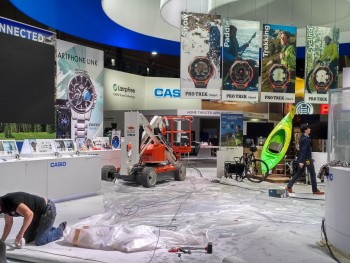COVID took a bite out of CES last year, but the show is on again for 2022. Next week, the annual emporium of emerging tech will be a hybrid live/virtual event, with the usual multi-venue expo and conference sessions linked with online access. My three-day assault pack for in-person attendance is ready.
I suspect there might a tonal change for this year’s conference. The last live CES was in January 2020, just several months before telehealth, telework, and distance education became universal mainstays. Until that point, telehealth was growing naturally, albeit slowly. It was an emerging technology with apps and hardware developing in pace with gradual user adoption. A major hurdle was packing telehealth into predated insurance reimbursement norms. For better or for worse, COVID changed that. Medicaid added more than 100 telehealth service to the “eligible for reimbursement” list, and states across the country eased licensure requirements to permit doctors to practice across state lines. The FCC’s COVID-19 Telehealth Program, established by the Coronavirus Aid, Relief and Economic Security (CARES) Act provided an initial $200 million to support telehealth usage throughout the country; the goal was to preserve medical facility space for acute needs and to enable telehealth-treatable conditions to be treated via . . . telehealth.
Healthcare was not the only industry to turn an important technological corner. Telework and distance education became mainstays, as well, driving new demand not only for functional applications but also increased understanding and attention to cybersecurity (for more information, visit NTCA CyberShare).
So, what comes next?
There is no shortage of pundits and predictions, and tech trend projections have proven largely reliable over the years. All those, “Whatever would we do with 50 Mbps of broadband?” questions are being pushed aside by the recognition that 100 Mbps is a good standard for today – coupled with the recognition that demand can only be expected to increase. McKinsey offers several examples, including process automation and virtualization (robots, industrial IoT, 3D printing) that will generate nearly 80 zettabytes of data annually (that is a one with 21 zeros, or 1021). And AI-driven autonomous functions that will rely on lightning-fast transmission capabilities. And massive cloud platforms for distributed IT infrastructure.
A notable aspect of these predictions is the common thread of industrial applications. And the follow-on question is the role these developments will play in ensuring the competitiveness of rural spaces for facilities that demand these capabilities. The USDA Economic Research Service found that rural areas do not lag behind urban areas in tech adoption or embracing new manufacturing processes; rather, the main contributor to discrepancies (where they exist) is usually differences in educational attainment among the work force (though it bears mention that gaps in rural and urban educational attainment have been closing over the past several decades – see this Smart Rural CommunitySM report).
So, three days in Vegas this year should be pretty good. COVID accelerated our recognition of what the future will be. Or, more accurately, that it has arrived and is here to stay.


